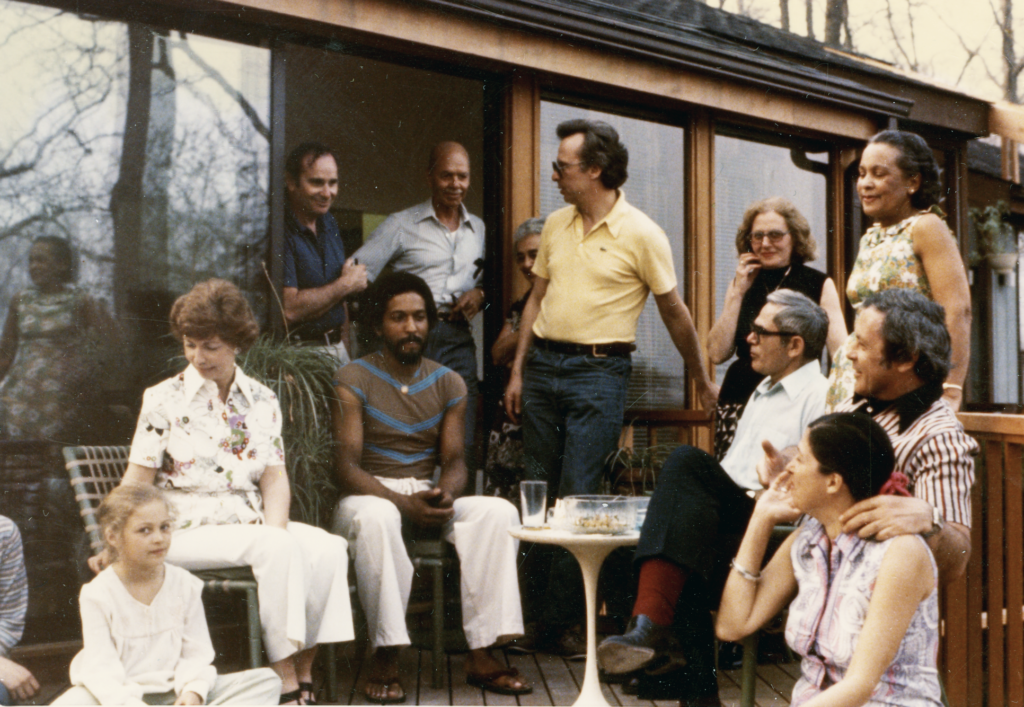(c) Connecticut Explored Inc., Summer 2021
Subscribe/Buy the Issue!
A small community in Norwalk has been doing the work of seeking racial equity since 1949. A casual visitor to Village Creek might not realize what makes this community stand out from any other. But it was founded as a cooperative, experimental community focused on racial and religious tolerance, in marked contrast to prevailing post-war segregationist policies.
Village Creek was created in 1949 by five couples who wanted to live by the water and have an easy commute to New York City. Securing one of the last available waterfront—albeit behind some factories—parcels, the partners divided up Village Creek’s 37 acres for 67 homes and community-owned amenities, including tennis courts, a playground, private beach, and marina. The founders also created a covenant between homeowners based on the Rochdale Principles, developed in 1844 in England and which became the foundation for cooperatives of all types around the world. The influence of the Rochdale Principles can be seen in the covenant’s insistence on democratic member control of the community, and most clearly in this statement from the Village Creek prospectus: “But above all else we wanted a different type of community with a completely democratic character—no discrimination because of race, color, creed or politics.”
Post-war America was booming with newly built suburban neighborhoods where Jews and non-whites weren’t able to buy homes. [See “How Segregation Happened in West Hartford,” Summer 2019.] Not only did Village Creek buck this trend, but one of its founders, Roger Willcox, an urban planner, went on to use his experience to found the National Association of Housing Cooperatives, replicating the Village Creek ethos in 30 other states.
In 2017 the Connecticut Historical Society acquired the records of the Village Creek Homeowners Association. The archives show the extent to which Village Creekers put in the hard work of cultivating community spirit and the unrelenting labor it took to do so. They formed committees to govern every aspect of community life. The founding families included lawyers, skilled craftsmen, teachers, doctors, and artists, who together brought a diverse set of experiences and skills to the community. Residents tackled the humdrum work of maintaining common areas. They also took on a years-long fight to block the building of a coal plant on nearby Manresa Island, though their effort was ultimately unsuccessful.
Their goals were easier said than done. One strategy they implemented was to set racial thresholds: they determined that the community should be no more than two-thirds white. In the context of the 1950s, this was extraordinary. But the commitment to diversity didn’t always make things smooth. For one, homebuyers in the community encountered difficulty getting Federal Housing Authority-backed mortgages because of racist banking practices.
Despite this and other challenges, such as being called “Commie Creek” by detractors, Village Creek was attractive to Black and white families. But in the early 1960s the Village Creek Homeowners Association (VCHOA) became concerned that inadvertent racial clustering was happening within the community, observing that most of the Black families lived on one of three roads. In 1962 it used its right-of-refusal on home sales to prevent a Black couple, the Vaughts, from buying a home on that road, though they were offered other options in the community. This led to accusations of discrimination and a lawsuit by the Vaughts against the VCHOA. Interestingly, the VCHOA was supported by the NAACP in this case, which lauded the community’s attempt to support integration. The case was resolved when a white buyer was found for another Black-owned home, and the Vaughts purchased their desired home.
Over the last 72 years Village Creek has thrived and endured. A 2010 New York Times profile noted that when homes became available, they were often snapped up by second- and third-generation Village Creekers. That same year, the community was listed on the National Register of Historic Places. In addition to its progressive stance against segregation, the neighborhood is important for its landscape design and mid-century-modern architecture. As the National Register application states, “The overall scale, massing and setbacks have been maintained throughout, resulting in a district [that]still has the distinct look and feel of a community of the 1950s that has chosen to express its forward thinking ideals through architecture as well as social action.” And as the Connecticut Freedom Trail website notes, the community’s “principled stance made them heroes to some and enemies to others, but it also made them pioneers in the movement for equal rights.”
Natalie Belanger is adult programs manager for Connecticut Historical Society. She is a frequent contributor to Grating the Nutmeg.
Explore!
Listen: Grating the Nutmeg, Episode 65: “Norwalk’s Village Creek Ahead of Its Time”
Connecticut Historical Society’s Natalie Belanger and Melica Bloom take a look at the founding of Village Creek and some of the challenges it has faced over the decades.
“How Segregation Happened in West Hartford,” Summer 2019
“The Federal Government and Redlining in Connecticut,” Summer 2019
Listen to Grating the Nutmeg, episode 43, “The Challenge of Fair Housing in Connecticut’s Suburbs,” featuring Dr. Jack Dougherty and Dr. Tracey Wilson. Ctexplored.org/Listen
GO TO NEXT STORY
GO BACK TO SUMMER 2021 CONTENTS
Subscribe/Buy the Issue!
Sign up for our bi-weekly e-newsletter



